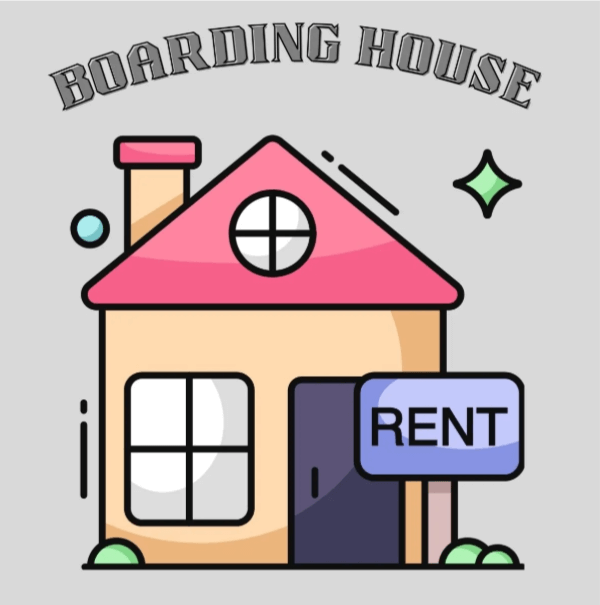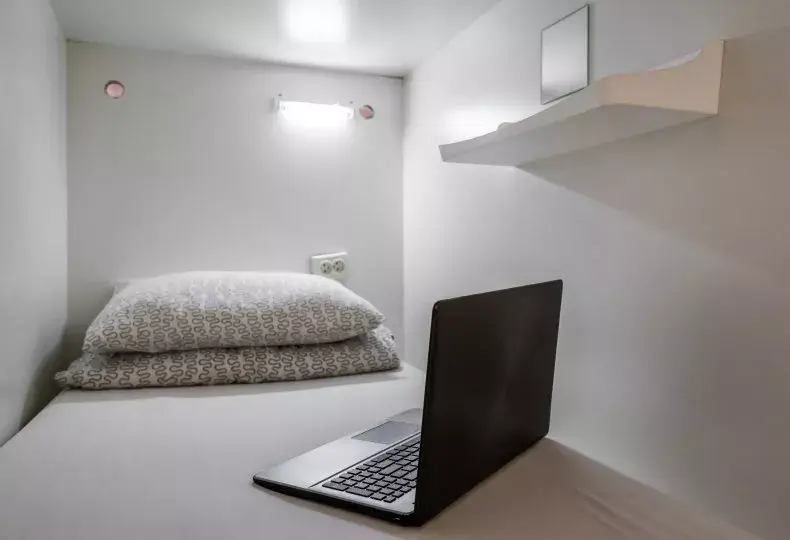UPDATE
After Brownstone Shared Housing got off to a rocky start, it says it not only learned valuable lessons and revamped its business model. It promises to deliver 10,000 new living pods to downtown San Francisco.
Carving out inventive, new living configurations and packing in as many tenants as physically possible will invite liability if housing providers do not comply with the law
Paying $700 a month in rent is quite a bargain to lay your head in San Francisco, but can landlords crowd tenants in to maximize revenue? This strategy may be penny-wise and a pound-foolish.
At first blush, it seems like a good business model for enterprising landlords. Convert unused office space, like a former credit union building at Mint Plaza, into dormitory-like sleeping pods and pack in tenants like sardines.
This is what one market disruptor did through his startup Brownstone Shared Housing, but the exuberant entrepreneur seemingly decided to build it first and ask for forgiveness later instead of permission. After a lengthy, costly battle with city officials, the San Francisco Chronicle reports that the enterprise is now on the verge of closing its sleeping pods for good.
Walk before you run.
Bornstein Law gets it. We have an acute shortage of affordable housing in the Bay Area that calls for creative solutions and new living configurations, but we need to do our homework first. Our concerns with hybrid, unconventional living spaces are severalfold, and our first task is to define what the space is. Is it a hotel, a boarding house, or an apartment with many people in one room?
Before taking all of that rent to the bank, housing providers must ascertain whether the building has proper zoning for the types of living quarters contemplated. Let’s delve deeper.
Unpermitted Use Conversion
Many spaces, such as offices or former credit unions, are not zoned for residential use. Converting them into living quarters without a change-of-use permit can trigger a violation. We have not been a Johnny-Come-Lately on this subject. Years ago, Daniel Bornstein warned of the perils of using commercial space for residential use.
Construction Without Permits
Alterations such as adding pods, converting toilets to showers, or installing unsafe locks often lack proper building, plumbing, or fire permits.
Safety Hazards & Compliance
Requirements such as egress, fire sprinklers, and proper exit locks must be met. Noncompliance can lead to fines or orders to vacate.
Occupancy Laws & Co-Living Limits
We have to put a finger on how many people are allowed to live together. In San Francisco, for example, the planning code prohibits more than five unrelated individuals from living together in one dwelling unless considered a “family,” effectively restricting many co-living setups.
As a sidebar, Supervisor Bilal Mahmood has introduced legislation to replace the term “family” with “household,” allowing up to nine separate lease agreements per unit. This change would focus on lease agreements rather than individuals, potentially allowing for larger co-living arrangements in existing housing stock.
The reform would remove a barrier that keeps housing off the market and prevent young people from renting homes.
Does a tenant enjoy protections afforded under respective ordinances?
In certain rent-controlled jurisdictions, it may prove difficult to part ways with a problematic tenant because unbeknownst to the landlord, the tenant is covered by local rent or eviction controls. Many landlords mistakenly believe that the tenant in a hybrid type of living arrangement like pod-living is transient in nature and can be easily transitioned out of their bunk bed.
Yet once a landlord-tenant relationship has been established, housing providers can be surprised to learn that they are limited in their ability to raise rents or evict someone who flops, absent a “just cause” reason to evict.
Other concerns abound.
Subletting and the swapping out of roommates is another concern. Whenever there are unconventional living arrangements with multiple people living under the same roof, rental relationships can become blurred in terms of who is responsible for what. This could become a game of musical chairs and anarchy as people go back and forth.
Is the occupant a tenant, a master tenant, a subtenant, a guest, or a flopper who has inadvertently become a tenant? This is enough to make any landlord’s head spin.
Not to mention San Francisco’s requirement that residential projects with 10 or more units include affordable units or pay a fee.

A word about single-family homes
Many owners of single-family homes have a false sense of bravado. They think that since they own a single-family home, they are exempt from rent and eviction controls and can turn it into a boarding house with impunity.
This is contradicted by case law.
In an earlier article, we pointed out that the courts have ruled that a “dwelling or unit” is not the entire property to which an owner holds title; instead, it is living quarters understood to be committed to the habitation of a given tenant or tenants to the exclusion of other residents. The owner’s four-bedroom detached home was therefore answerable to Oakland’s Rent Adjustment Program (“RAP”) and the three unrelated tenants he rented to were entitled to the protections under the ordinance.
Parting thoughts
While unorthodox living arrangements can be part of the solution to the Bay Area’s housing dearth, housing providers must be extremely careful. Cramming people into a confined space may be attractive economically; landlords may not recognize that the extra rent money can be disgorged if the property runs afoul of the law.
We like to say that when everything is going well, it’s going great. When it goes badly, it is awful, such as when there are complaints by tenants and/or when building inspectors start snooping around.
Of course, Bornstein Law can untangle rental relationships if a problem arises and provide informed advice whenever landlords contemplate new living configurations in a building.
Related article Berkeley group living accommodations and mini-dorms

